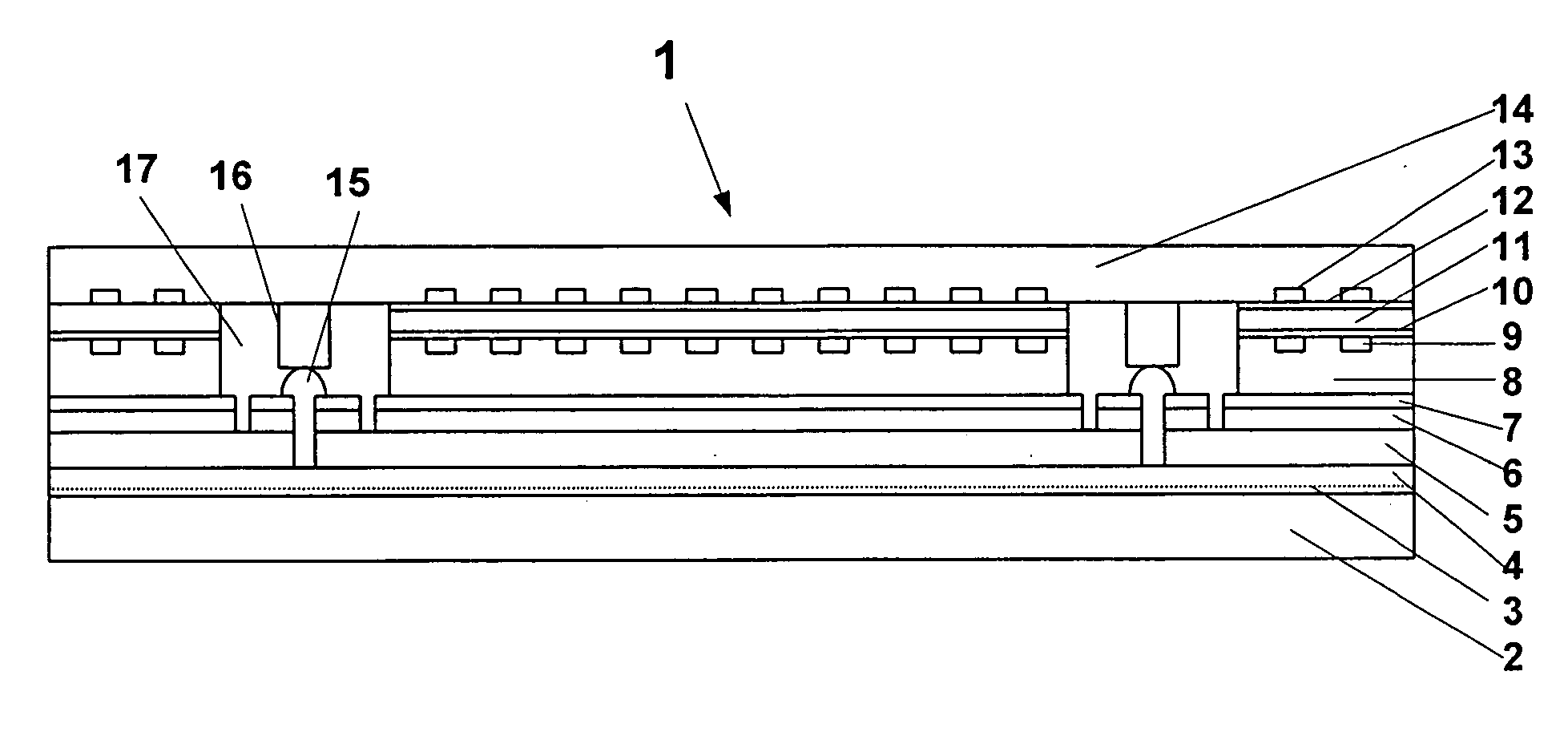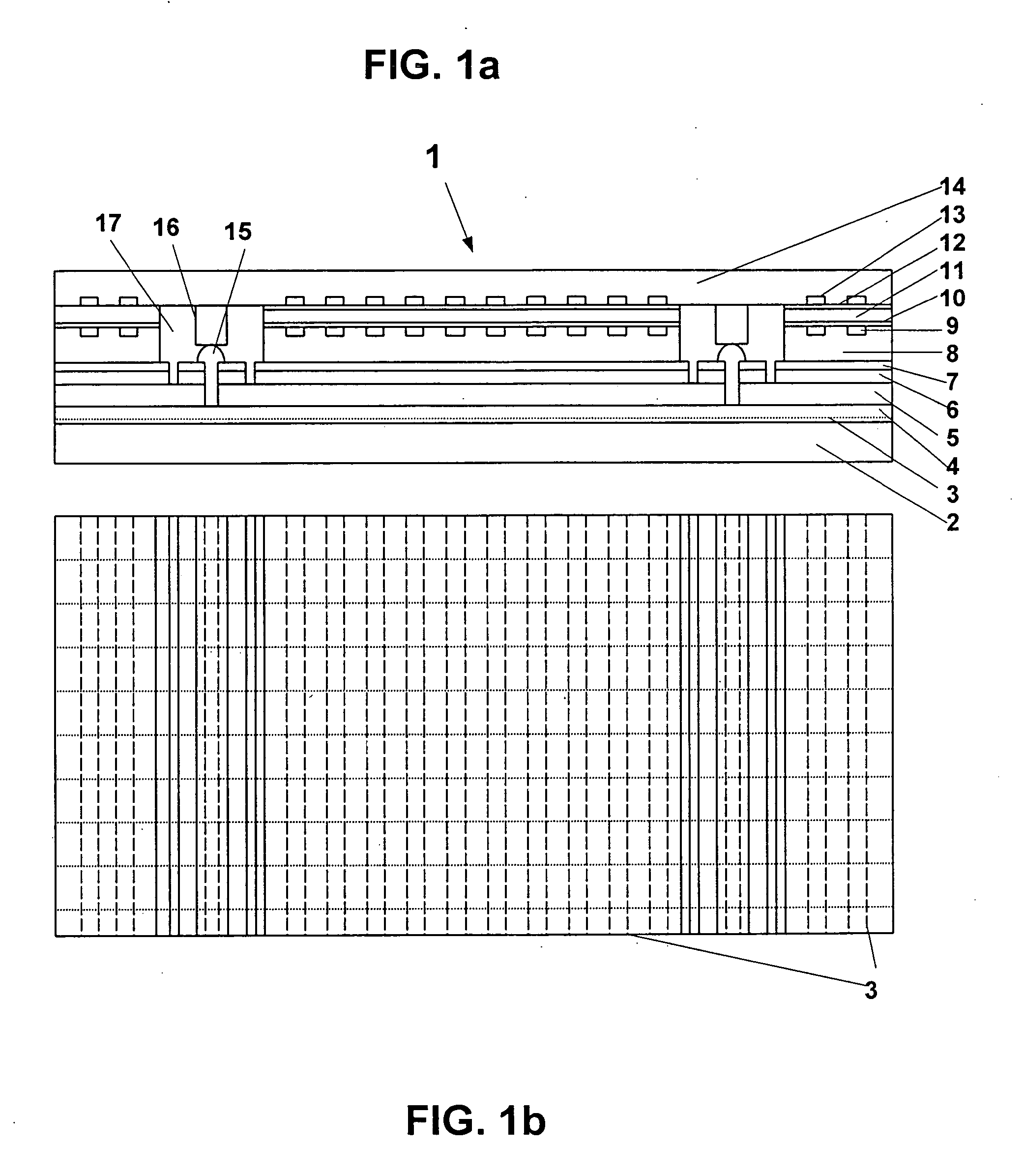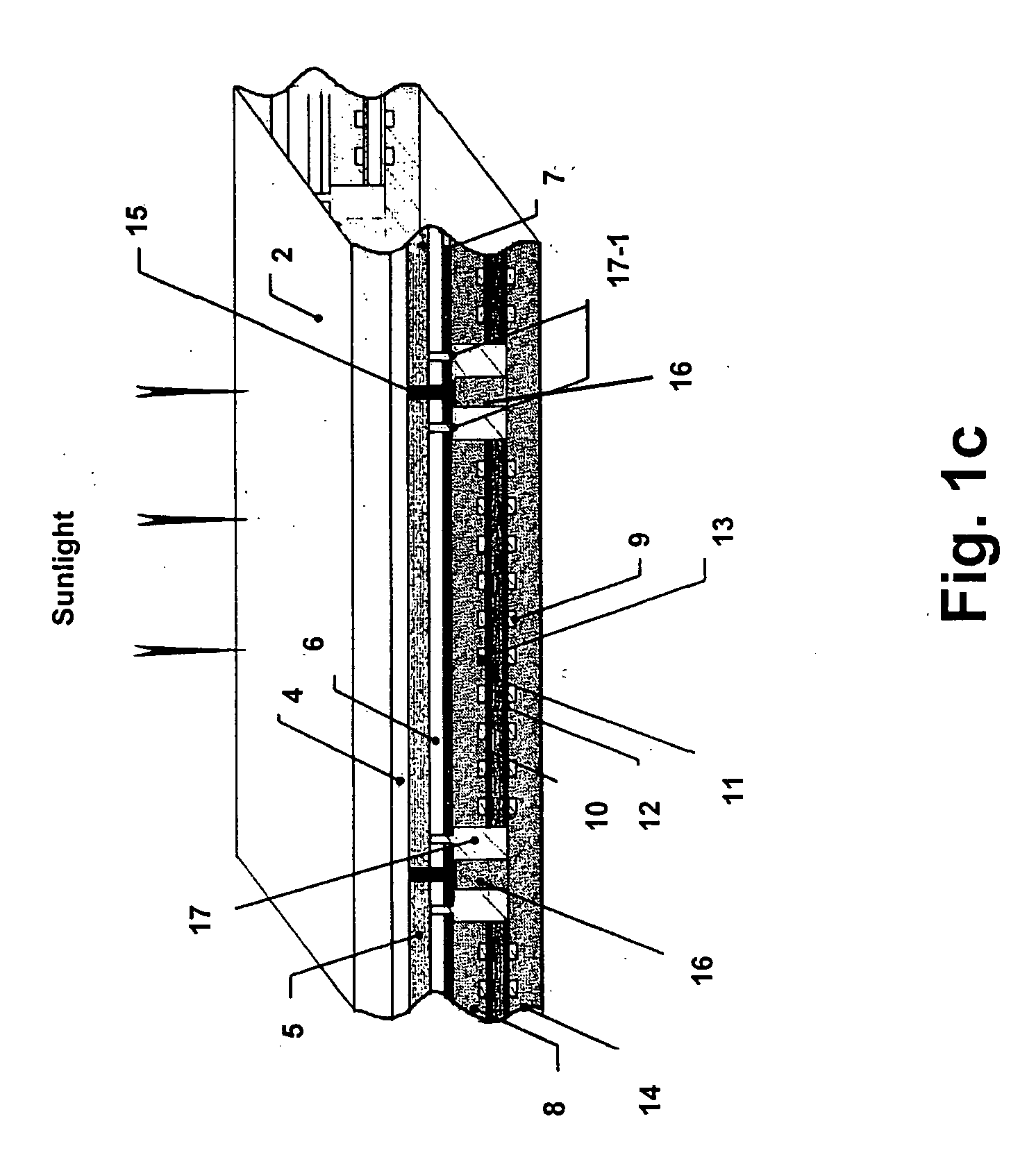Integrated photoelectrochemical cell and system having a solid polymer electrolyte
a photoelectrochemical cell and solid polymer technology, applied in the direction of electrochemical generators, sustainable manufacturing/processing, final product manufacturing, etc., can solve the problems of large amount, inconvenient operation, and insufficient voltage generation of photovoltaic cells and electrodes, etc., to achieve high conversion efficiency and low cost
- Summary
- Abstract
- Description
- Claims
- Application Information
AI Technical Summary
Benefits of technology
Problems solved by technology
Method used
Image
Examples
example 1
[0083] An example of the semiconductor junction / stack 5 in the PV structure 4-7 is a two-junction a-Si / a-SiGe solar cell. The total voltage can be made to be around to 1.6V or higher at operating point, when relative low Ge content is used for the absorber layers. In one specific embodiment, the structure comprises: glass / grids / SnO / a-SiC p / a-Si intrinsic / a-Si n / s-SiC p / a-SiGe intrinsic / a-Si n / ZnO / aluminum.
[0084] The thickness of the respective layers are approximately: 1 mm / 10 μm / 1 μm / 10 nm / 150 nm / 10 nm / 10 nm / 150 nm / 200 nm / 150 nm, respectively, for optimum sunlight radiation.
[0085] In certain specific embodiments, the length of each sections of end plate 8 is around 5 to 10 cm while the width of the laser scribing is about 0.1 mm.
[0086] In certain specific embodiments, the thickness and bandgap of a-Si and a-SiGe intrinsic layers may be adjusted such that the two component solar cells generate about the same electrical current under the radiation specified. For electron radiation...
example 2
[0090] There are different ways water can be directed into the MEA. In addition to the methods described above, another way to direct water into the electrolyte is to create channels in the solid polymer electrolyte. In such embodiment, water can flow directly into the electrolyte instead of going through the channels on the end plate. Also, in other embodiments, water can flow only through the end plate that is closest to the electrode where water is consumed.
PUM
| Property | Measurement | Unit |
|---|---|---|
| voltage | aaaaa | aaaaa |
| voltage | aaaaa | aaaaa |
| total voltage | aaaaa | aaaaa |
Abstract
Description
Claims
Application Information
 Login to View More
Login to View More - R&D
- Intellectual Property
- Life Sciences
- Materials
- Tech Scout
- Unparalleled Data Quality
- Higher Quality Content
- 60% Fewer Hallucinations
Browse by: Latest US Patents, China's latest patents, Technical Efficacy Thesaurus, Application Domain, Technology Topic, Popular Technical Reports.
© 2025 PatSnap. All rights reserved.Legal|Privacy policy|Modern Slavery Act Transparency Statement|Sitemap|About US| Contact US: help@patsnap.com



